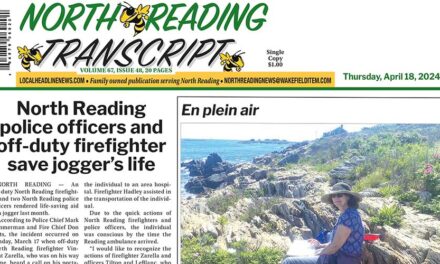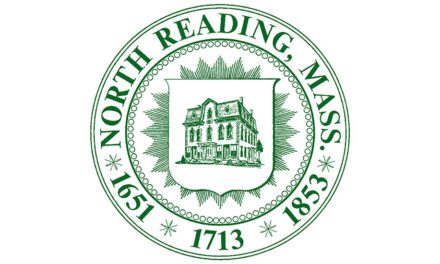By BOB TUROSZ
NORTH READING – North Reading will maintain a single tax rate for all residential, commercial and industrial properties for 2015, according to a unanimous vote of the Board of Selectmen Monday night.
The tax rate itself will increase modestly, up 19 cents to $16.62 per thousand valuation. The average residential single family home in town is now valued at $482,670, up 6 percent from 2014, when the average was $454,500. At the new tax rate, the average residential bill for a single family home will be $8,010. The average commercial and industrial property value has remained flat. In 2015 that average value will be $955,041, up from $950,950 in 2014, according to the presentation.
This year’s annual tax rate and classification hearing held by the Selectmen was a relatively cut-and-dried affair, with no disagreement among the board members as to whether there should be a split tax rate favoring residences over business property. The consensus was to stay with a uniform tax rate. With over 87 percent of the town’s tax base residential and less than 13 percent commercial and industrial, the board members felt it would be counter productive to shift a higher percent of the tax burden to business property at this time, when the town is actively attempting to encourage commercial development.
After listening to a presentation from Chief Assessor Deborah Carbone and Finance Director Liz Pavao, the board voted unanimously to:
• Tax all property in town – residential, commercial and industrial – at the same rate.
• Against establishing an open space tax discount, under which the Selectmen may discount up to 25 percent of the Open Space share of taxes. This was based on the simple fact that North Reading does not have any open land that qualifies for such an exemption, according to Carbone.
• Not to establish a residential tax exemption of up to 20 percent that would shift the residential class tax burden from lower assessed, owner-occupied properties to higher assessed properties and properties that are not the principal residence of a taxpayer.
• Against establishing a small commercial exemption of 10 percent that would work in much the same way as the residential exemption. This would benefit small business parcels valued at less than $1,000,000 and owned by a business that employs fewer than 10 employees. There are only 46 potential properties in town that could qualify, said Carbone, and the tax shift would be borne by higher-valued commercial and industrial properties.
• To set one uniform tax rate for all classes of property.
• To set the fiscal year 2015 property tax levy at $44,382,164, which is $12,355 less than the levy limit.
• To recommend to the Board of Assessors that the fiscal year 2015 tax rate be set at $16.62 per $1,000 valuation.
All of the votes were 4–0, with Selectman Stephen O’Leary recusing himself and not in attendance.
Nearly 87.3 percent of all property (the tax base) is residential, Carbone told the Selectmen. Only 6.8 percent is commercial, 4.2 percent is industrial and so-called personal property accounts for only 1.7 percent. All of these last three categories are down from 2014, while the residential share of the tax burden has risen, because residential property values have risen while commercial has stalled.
There are 5,318 residential properties in town. There are 223 commercial properties and 85 industrial parcels of land.
Monday night’s hearing was a continuation of the tax hearing that was originally scheduled for Nov. 24, but had to be continued because the state Department of Revenue had not yet certified the town’s property valuations. That certification was received Friday, Nov. 28, and with all the information available and approved, the Selectmen got the green light to proceed with the annual financial rite of winter.
Even though there were two opportunities to attend the hearing and weigh in with an opinion, no member of the public came before the Selectmen to express an opinion on whether or not to split the tax rate.




